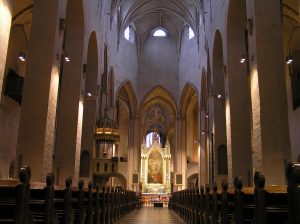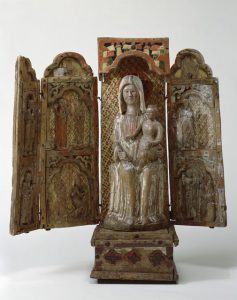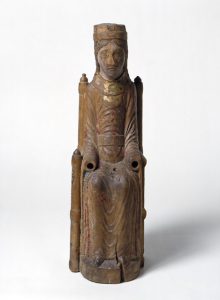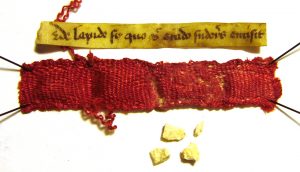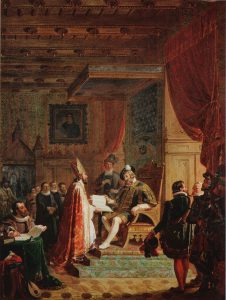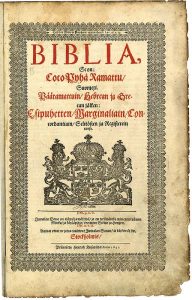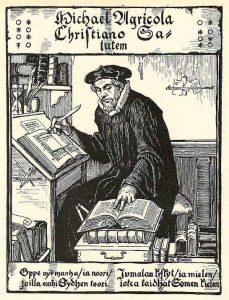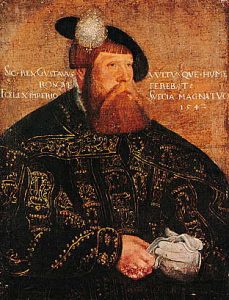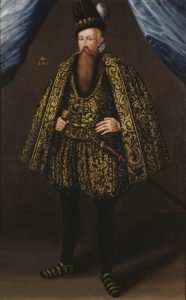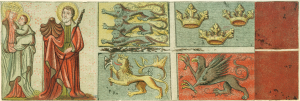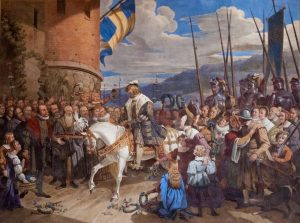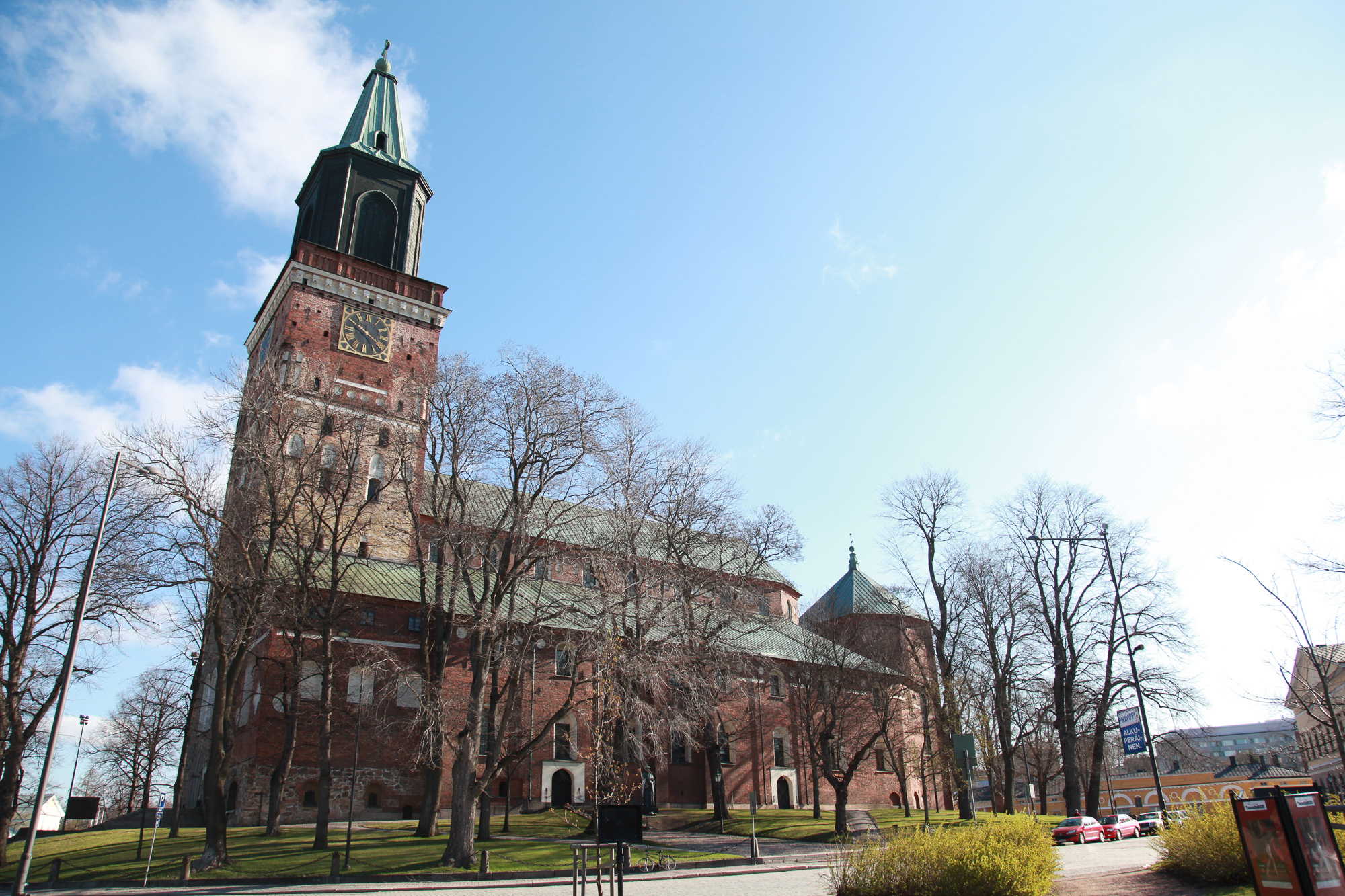Turku was the second largest city in the kingdom of Sweden and the administrative and ecclesiastical capital of Finland. The city was founded during the 13th century, but the growth of the city dates only from the 1360s onwards, and the city reached its heyday later, in the 15th century.
During the Middle Ages, the Church was the single most prominent land owner in the city, owning an estimated circa 50 per cent of all land. There were approximately 30 religious buildings in Turku at the end of the Middle Ages. The Cathedral of Turku was the largest and most magnificent building in the city. With the Reformation, religious buildings were gradually taken from the Church and transformed for use in secular activities.
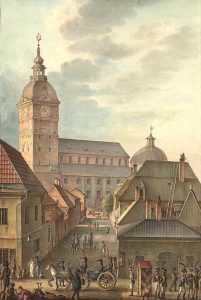
Turku before the Great Fire of 1827. By Carl Ludvig Engel – Digital collection of Finnish National Library. Wikimedia Commons.
The Cathedral was surrounded by a wall, with most of the important ecclesiastical edifices located next to it. The most impressive building must have been the Bishop’s Palace, built probably in 1429 by the Bishop Magnus Olai Tavast. According to archaeological evidence, it was a quite large building likely with many floors. During the Reformation, the King confiscated the Palace, and it was used for secular purposes. The Palace lapsed into disrepair in the 17th century. The house of the Cathedral Chapter, the Cathedral School, the house of the priests and the residence of the Cathedral Dean were also located in the vicinity of the Cathedral, and all were seized from the Church for secular usage or left to decay. All in all, the Reformation changed the cityscape of Turku by secularising it. Buildings that once represented the power of the Church were symbolically handed over to secular authorities.
Turku had very few Churches in the Middle Ages, but during the Reformation in the 1580s, two new church buildings were initiated. One church was built in the proximity of the Cathedral for the German-speaking inhabitants, and another for Finnish-speaking inhabitants was instituted on the other shore of the River Aura. However, this church was never completed and it was demolished during the 17th century. The church’s ruins were rediscovered during excavations in the 20th century, and today an ecumenical chapel has been built amongst the ruins underground, to be visited by tourists.
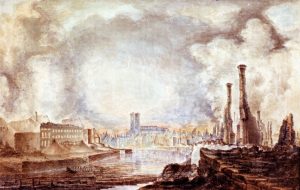
Turku was totally ravaged by the Great Fire of 1827, and therefore no medieval buildings other than the Cathedral are left. By Gustaf Wilhelm Finnberg. Wikimedia Commons.
The townscape of Turku thus changed in many ways during the Reformation, but more than religious ideas, fire altered the face of the city. The town was burnt partially at least twelve times during the 16th century. The last great fire happened in 1827, when three-quarters of the city were completely ravaged. After the fire, Turku was rebuilt, and the Castle and the Cathedral are the only medieval buildings remaining. However, the ruins of medieval Turku can be visited in the underground museum Aboa Vetus et Ars Nova.
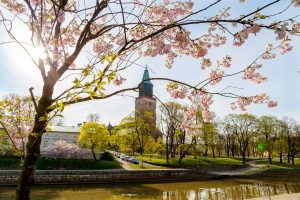
Turku Cathedral seen from the outside. Today, a park and a plaza surround the Cathedral. Hanna Oksanen/ University of Turku
The Dominican Convent of Turku
The Dominican Order arrived in Finland at the beginning of the 13th century and founded monasteries in both Turku and Viipuri (Vyborg). The Dominicans had a great impact upon Finnish medieval ecclesiastical and political life. After the Reformation, the activity of the Order was soon run down. The convent in Turku was officially closed in 1536, and a great fire ravaged the convent the following year, destroying all the buildings. The brothers of the convent dispersed and became priests in the parishes. We know that the last Prior of the convent, Michael Michaelis, became the Vicar of Taivassalo, and that his son succeeded him in the position. The convent was quite soon forgotten in Turku, and by the 19th century, nobody remembered where the Convent had been situated.
